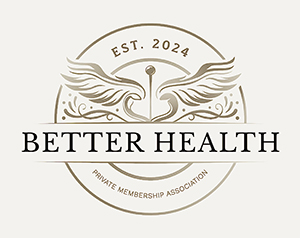 What is Osteopathy?
What is Osteopathy?
Osteopathy is a form of medicine that focuses on the patient and emphasizes the role of all of the body systems, including the musculoskeletal system—the bones, muscles, cartilage, ligaments, and joints that provide the movement, support, and stability for the human body—for staying healthy.
What is a D.O.?
In the United States, Doctors of Osteopathic Medicine (DO’s) are fully trained physicians, licensed to practice the entire range and scope of medicine and surgery. US trained DOs attend their own medical schools, receive the same post-graduate training as their MD colleagues, and receive additional education in the principles of osteopathy, applied in practice as osteopathic manipulative treatment. Osteopathy is a system of medicine that recognizes the dynamic relationship of structure and function in health and disease. Only US trained DO’s can be licensed to practice osteopathic medicine in the United States.
What is Osteopathic Manipulative Medicine?
Osteopathic Manipulative Medicine focuses on the natural motion within the body’s structure and its relationship to function. When alteration of tissue motion is found, osteopaths work to restore health by applying osteopathic principles in the practice of hands-on treatment to help restore normal motion. Osteopathic knowledge and treatment considers the musculoskeletal system to be an extremely important but often neglected aspect of total health.
From babies to grandparents, osteopathic manipulation has worked for a range of symptoms. Infants with a tendency for colic, trouble with digestion, spitting up, learning disorders, and cerebral palsy have been helped by osteopathic treatments. From serious pain issues to smaller uncomfortable pains like neck and back problems, joint pain, sciatica, headaches, asthma, and allergy symptoms can be relieved through osteopathy as well as neurological problems like seizures, sinusitis, and even digestive tract conditions.
Former U.S. presidents and important political figures FDR, Eisenhower, and JFK all relied on osteopathic services for their health needs. Many movie stars and celebrities today receive their health care from an osteopath.
The Next Step – What is Neuromusculoskeletal Medicine?
The discipline of Neuromusculoskeletal Medicine and Osteopathic Manipulative Medicine directs special attention to the neuromusculoskeletal (nervous, muscular and skeletal) system and its interaction with other body systems. Neuromusculoskeletal Medicine and Osteopathic Manipulative Medicine encompasses increased knowledge and understanding of osteopathic principles and practice and heightened technical skills of osteopathic manipulative medicine, and integrates each of these into the management of pediatric, adolescent, adult, and geriatric patients. This specialty includes knowledge of anatomy, physiology, and pathology as they relate to all body systems in health and disease, and focuses on knowledge relevant but not limited to the disciplines of neurology, rheumatology, orthopedics, physical medicine and rehabilitation. Neuromusculoskeletal Medicine and Osteopathic Manipulative Medicine involves the development of skills in the use of visual, palpatory, and biomechanical evaluation techniques for improved physical assessment of body disturbances expressed clinically in the neuromusculoskeletal system and in other fundamentally related systems.
The Next Step – Fellowship in the American Academy of Osteopathy
After completing residency training in Neuromusculoskeletal Medicine and Osteopathic Manipulative Medicine, a physician becomes eligible to take the specialty board exam (residency trained and board eligible). Upon the successful passing of the board exams, you become board certified. Charlie passed his board exam in 2007. The next (and final) step is to achieve Fellowship in the American Academy of Osteopathy. There are approximately 85 Fellows in the entire world (so it is pretty specialized). This process requires a number of pre-requisites, including being in practice for three years after completion of the board exam, community service, a teaching requirement, and being active in committees of the Academy. The Fellowship process is two years in length after the pre-requisite requirements have been met. It includes an entrance interview and writing at least three case studies and a thesis that all go through peer review for publication. The process completes with the successful passing of an oral defense of your thesis and case studies and a practical exam. Charlie passed his board exam in 2007 and recertified in 2017.
